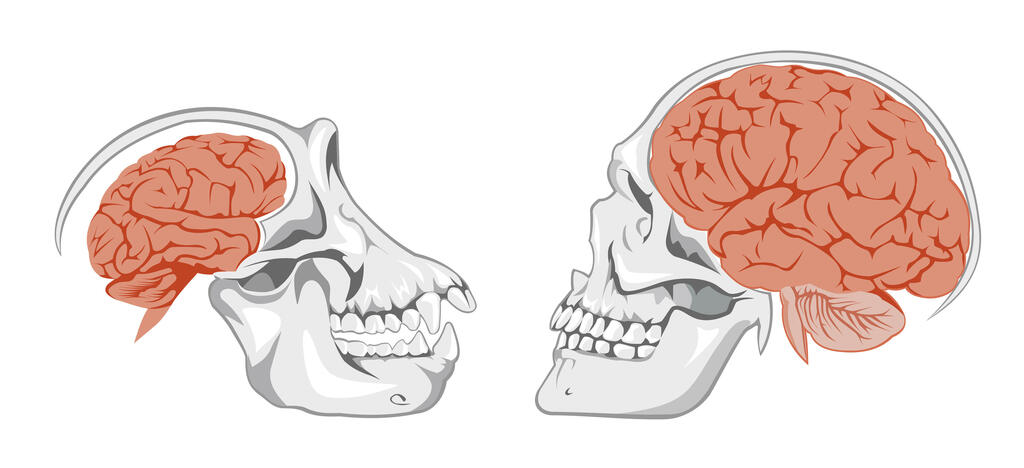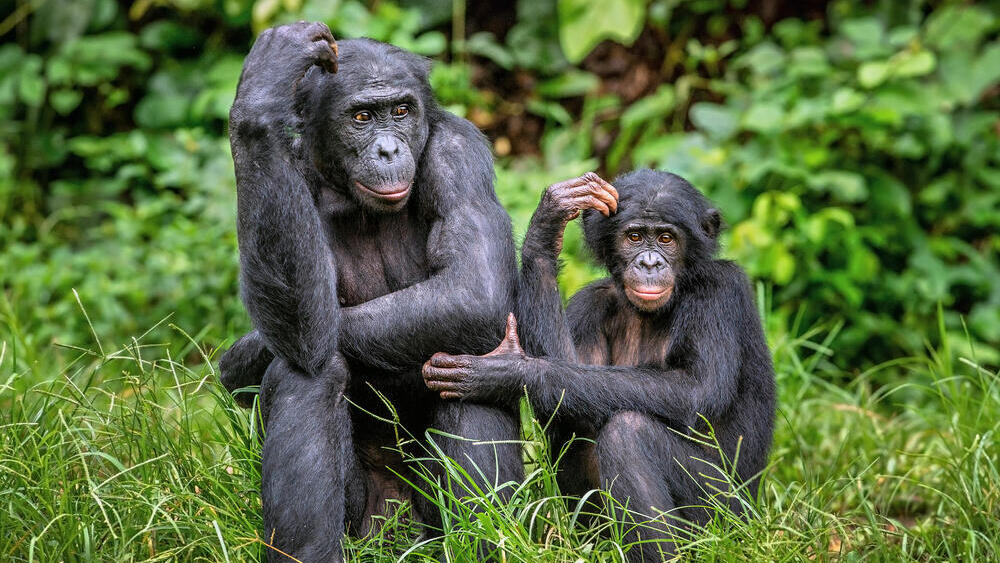Over the past two million years—a brief span in evolutionary terms—the human brain has tripled in size. This rapid growth likely played a key role in enabling us to develop complex cognitive abilities like language and advanced problem-solving. Many researchers have long sought to understand the basis of this phenomenon, often by comparing the DNA of modern humans, ancient humans, and chimpanzees.
In recent years, it has become increasingly clear that evolution is not driven solely by genetic sequences but also by epigenetics—the regulation of genes, which varies between species and even individuals, creating significant differences. To study epigenetic processes in the brain, researchers need brain tissue. However, no brain tissue from ancient humans, such as Neanderthals, has been preserved. As a result, most research in this area has focused on bones, as they are the only tissues that withstand the ravages of time.
3 View gallery


The study allows a glimpse into the brains of ancient humans for the first time
(Photo: Andrii Zastrozhnov / Shutterstock)
A groundbreaking study led by doctoral student Yoav Matov, under the guidance of Professors Liran Carmel and Eran Meshorer from the Department of Genetics and the Edmond and Lily Safra Center for Brain Sciences (ELSC) at Hebrew University, has for the first time allowed researchers to peer into the brains of ancient humans. The team developed an algorithm that can reconstruct DNA methylation patterns—a key epigenetic marker—from non-bone tissues, achieving an impressive accuracy of up to 92 percent.
The researchers applied this algorithm to ancient humans and uncovered over 1,850 sites where epigenetic changes had occurred in the brain. These changes were observed not only between modern humans and other ancient human groups but also between humans and chimpanzees. Many of these sites are located within genes critical for brain development, including those linked to intelligence and cognitive abilities.
Intriguingly, changes were also found in genes from the NBPF family, which are involved in major processes in human brain evolution, such as the significant increase in brain volume, the development of cognitive abilities, and even brain disorders like autism and schizophrenia. "Our method allowed us to examine epigenetic changes in ancient human brains for the first time," Matov said. "Now, we can use this approach to explore evolutionary processes in other tissues, which typically do not survive. The potential for new discoveries is limitless."
Matov went on to explain the growing buzz around epigenetics in the medical world, a field that studies changes in gene expression that do not involve alterations to the DNA sequence itself. He uses a simple analogy to explain the concept: "Imagine your DNA is a huge library containing many books (genes), with instructions on how to build us, humans. To understand what makes us unique, what makes our brains so advanced, we need to examine DNA and genes related to the human brain. This could help us spot differences between human and chimpanzee brains. But in reality, many of the differences we observe don’t actually appear in the genes themselves."
Epigenetics, Matov explains, acts as a "regulator" of DNA. For example, a frog starts its life as a tadpole. While the tadpole and the adult frog are the same organism and share the same DNA, they look and function completely differently. This phenomenon is due to epigenetics, which controls when certain genes are activated. There are various mechanisms on the DNA that decide which genes to use and when. "This means we need to look at epigenetics, because humans, chimpanzees, and Neanderthals may have the same genes, but with different 'regulators,'" Matov said.
This means that to study the DNA of Neanderthals or other ancient humans, researchers need not only their DNA but also to identify these "regulators." Matov and his colleagues previously developed a method to locate these regulators. "Epigenetics is tissue-dependent," he says. "Every cell in the body contains the same DNA, but the genes that are important for the brain are not the same as those for bones. Epigenetics allows a gene that is active in bones to remain inactive in the brain, and vice versa. Why is this important? Because all we have from Neanderthals are bones. If we want to study their brain's epigenetics, we need brain tissue, which, unfortunately, has not survived."
Matov emphasizes that to understand what made humans so intelligent, we must study ancient brains. "In this research, for the first time, we've created a method that allows us to look at what's happening in the brain without needing actual brain tissue from ancient humans—only bones. We’re comparing various human groups and chimpanzees, which helps us learn about DNA methylation in the brains of creatures that no longer exist and whose brain tissue we don't have. We can also compare where they are similar to us and where they differ from chimpanzees."
Not surprisingly, the most significant differences found between humans and chimpanzees were in genes linked to brain development, particularly during fetal development. "We found differences in genes where mutations are known to cause intellectual disabilities," Matov explained. "This suggests these genes may be related to intelligence or cognitive abilities."
 Yoav MatovPhoto: Crystal White
Yoav MatovPhoto: Crystal WhiteThe most fascinating discovery, Matov says, was in the NBPF gene family. "We know these genes are associated with evolutionary changes in the brain, especially brain growth. By studying these genes across different species, we see gradual changes and differences between distant primates. As we move closer to humans, the changes accumulate and correlate with brain size." There is a direct link between human brain size and the number of changes in these genes, which are associated with brain development, cognitive abilities, and even disorders like autism and schizophrenia.
"This is truly remarkable, strange, and exciting," Matov concluded. "And this is just the first step of the research. We can now apply this method to study many other things. For example, we could examine how human skin differs from chimpanzee skin, how human hearts differ from those of other species—the possibilities are endless."
Get the Ynetnews app on your smartphone: Google Play: https://bit.ly/4eJ37pE | Apple App Store: https://bit.ly/3ZL7iNv



